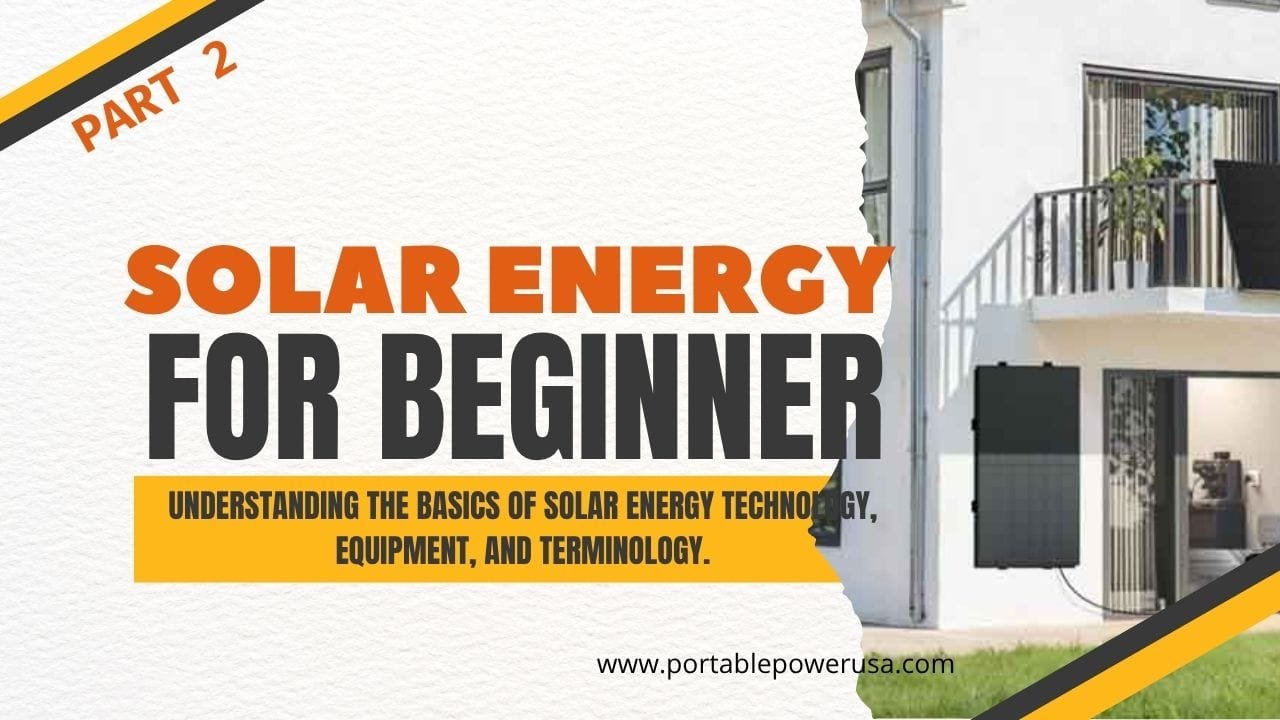Table of Contents
Understanding the basics of solar energy technology, equipment, and terminology.
Solar Energy for Beginner – An introduction to the common equipment and terminology used in solar technology. Topics of discussion include solar PV systems, solar terms, system components, net metering, and financial considerations with regard to solar development.
3.6 Raceway (Conduit)
Raceway includes conduit, boxes, fittings, and enclosures that provide a pathway and protection for individual conductors. All raceway systems must be suitable for the environment in which they are installed. All metal raceways must be bonded to form part of the equipment grounding conductor.
All DC conductors that enter a structure must be installed in a metal raceway, NEC 690.31(G), or MC cable that meets NEC 250.118(10). Flexible and nonmetallic conduits may be permitted under certain conditions. In addition to NEC 690, refer to Chapter 3 of the NEC for types of permitted conduits and uses.

3.7 Battery Backup
Most residential solar PV systems are utility grid-tied, but do not include a battery backup system. In the event of a blackout or grid failure, such solar PV systems de-energize and do not function until grid power is restored, as required by NYS’ Standardized Interconnection Requirements (SIR; www3.dps.ny.gov).
Off-grid (“stand-alone”) solar PV systems are not connected to the grid. Solar PV output is stored in a battery bank, which provides power to the site’s electric loads. In addition to a battery bank, these systems include one or more charge controllers, which determine the amount and rate of power that can be stored and drawn from the battery bank.
Battery-backup solar PV systems are utility grid-tied and include a battery system that is used in the event of grid failure. Due to the high cost and additional complexity, battery backup on solar PV systems is currently rare. Section 690.71 of the NEC contains additional requirements for solar PV systems with batteries.
4. Net Metering
Solar electric systems are a distributed generation (DG) technology that currently qualifies for net metering in New York State. Any power produced by a solar PV system that isn’t consumed on-site is pushed into the utility grid. The solar PV system owner receives a credit for this production on their monthly utility bill.
Utilities typically install a meter at solar PV sites, which tracks the amount of electricity taken from and fed into the grid. The site owner is billed for only the net electricity consumed. Nonresidential solar PV systems can credit their production to off-site electric accounts through remote net metering, but this type of arrangement is outside the scope of this document.
5. Financial Considerations
Most homeowners view the installation of a solar PV system as a financial investment. Over time, the power it produces generates savings on their electric bills.
5.1 Incentives
Although the costs of residential solar PV systems have fallen significantly in recent years, they still typically cost tens of thousands of dollars. The project cost includes the modules, inverters, balance of system components, and “soft costs,” such as installation and administrative labor, customer acquisition, and engineering.
Several incentives make projects more affordable for homeowners. NYSERDA’s NY-Sun Incentive Program administers a step-down megawatt block incentive program. Visit the NY-Sun Program Site for the most up-to-date information regarding available incentives. For information regarding tax credits, we encourage you to speak with a tax accountant.
Other incentives may exist at the local level, including real property tax exemptions and a real property tax abatement program in New York City. Unlike most residential home improvements, most solar PV installations in New York State do not increase the taxable value of a home.
However, local governments can opt out of this exemption. One excellent resource to navigate incentives is www.dsireusa.org. Customers should consult a tax advisor to determine their eligibility for tax credits.

5.2 Purchase Types
Many homeowners choose to buy a solar PV system with cash or by taking out a loan. As the system owners, they can apply for all applicable tax credits. Installation companies typically offer a 5 to 10-year warranty, and some manufacturers offer extended warranties. An increasing variety of loans is available to help customers finance the purchase of solar PV systems.
Leasing a solar PV system is another common option. With this model, a third-party company (often the installation contractor) is responsible for installing, operating, and maintaining a solar PV system at the customer’s site. Customers sign long-term leases (typically 20 years) and make monthly payments to the company that owns the solar PV system.
In return, customers receive all the electricity produced by the system. At the end of the lease term, the homeowner typically has the option of renewing the lease, purchasing the equipment at fair market value, or having the system owner remove the equipment. The company that owns the solar PV system receives most of the tax benefits.
A third option is a power purchase agreement (PPA). It is similar to a lease, but instead of paying a flat monthly fee, customers
pay for the amount of electricity actually produced by the solar PV system.
Frequently Asked Questions – Part 3 >
You Might Also Like




























